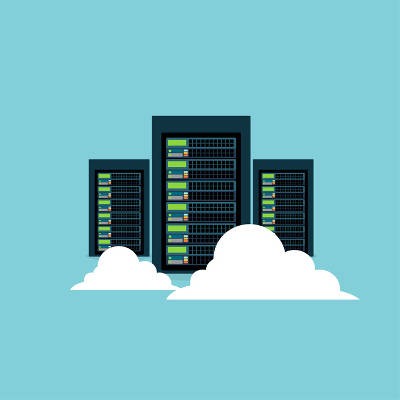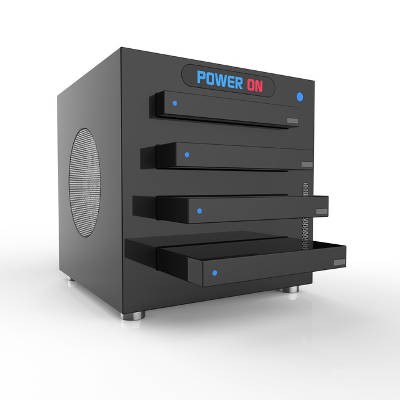Social media might make it easy to stay connected, but it comes with a lot of negative side-effects--particularly in regard to security for both personal and professional use. If social media isn’t used properly, it could spell trouble for your organization. How can you foster proper social media usage so that your organization doesn’t suffer from poor security practices? It all starts by spreading awareness.
Telesys Voice and Data Blog
When security and efficiency are some of the biggest benefits to updated information technology, it sounds that IT is something that a governing body should prioritize internally. However, many governments have trouble doing so, oftentimes to their own detriment. Why is that, and what can a business learn from this phenomenon?
Ransomware is a growing problem for businesses, being one of the most difficult threats to remove from an infrastructure. Not only is it easy to spread, but difficult to avoid as a whole. How can your organization prepare for this threat? It starts by being mindful of how ransomware is spread and how your employees react to it, both now and in the future.
Ransomware locks down files on your business’ infrastructure. Through ransomware, it’s easy to cripple a business by limiting access to important information or files located on an infrastructure. If the user fails to pay the ransom, they risk losing their data for good. Even if they do pay the ransom, there’s no guarantee that the hacker will give up the encryption key. The user is presented with a conundrum; pay up for a potential to get your data back or ignore the request and hope for the best.
Ransomware was primarily spread through the use of spam when it was first introduced to the online environment. Hackers would create ransomware campaigns to spread it to as many users as possible, hoping that any number of them would choose to pay up rather than lose access to their precious files. As time went on, however, ransomware became used in a more targeted fashion. Rather than claim as many targets as possible, hackers instead chose to go after only those who were most likely to pay up with spear phishing tactics designed to fool even the most stalwart and mindful user. In many cases, these targeted attempts were made against businesses, whom value data more than the average end user might.
These spear phishing attempts are incredibly difficult to identify for the untrained eye, and the amount of damage they could inflict on your company is untold. Your employees need to be able to identify potential ransomware threats. Even the cautious approach might not be enough, however, as the future of ransomware could potentially hold even more dangerous threats. Already, hackers are taking advantage of threats that can be purchased on the online black market, including ransomware threats, vulnerabilities, and even lists of targets. How can a small business protect themselves from such a prominent threat?
It all starts by remaining as mindful of security best practices as often as possible. By this, we mean trusting no suspicious message in your inbox without first double-checking any information found in it. If you receive an unsolicited message with an attachment claiming to be a resume, bank statement, shipping information, or anything else that seems out of place, think twice before downloading them. The same can be said for any links that cannot be verified as secured.
Is your business prepared to handle the next generation of ransomware? While we don’t know what the future holds, we know that you can confidently face it with security services from Telesys Voice and Data. To learn more, reach out to us at (800) 588-4430.
Data management is exceptionally important for any business, and companies that use the cloud in any sort of capacity need to be considerably more cautious in the way that it’s managed than a business that only hosts data on an internal server or network. The cloud makes things more complicated at times, but if managed correctly, it can lead to unprecedented efficiency for your organization.
There is no understating the importance of strong, reliable passwords to your organization’s network security, especially to protect its wireless connection. However, this can create some friction with your staff when they try to connect to Wi-Fi using their mobile device. To make accessing the Internet easier, scannable QR codes can be used to connect to the Internet.
This guide was created so that business owners, office managers, and IT departments can provide it as an educational resource to showcase some of the most basic IT security practices that can be implemented in your workplace. We recommend printing this out and handing it out to your staff for maximum results.
Every business needs technology support. This statement is more true today than it has ever been before. As your organization adds new technology to its infrastructure, it will naturally grow more complex and difficult to maintain. Thankfully, you don’t necessarily have to go about this alone. By working with an outsourced third party, your business can take advantage of all kinds of great solutions for a fraction of the cost.
Depending on the way you go about technology maintenance, you can either wind up investing in your business’s future or wasting vital capital. Traditional break-fix IT strategies take a responsive approach to IT maintenance. By this, we mean that you’re reacting to issues as they crop up rather than preventing them outright. This is not the ideal way to approach IT maintenance, as you will spend more time and resources addressing issues that could have been avoided in the first place. Instead of traditional break-fix, you should consider investing in a more preventative approach to technology maintenance.
If you want preventative solutions, your business is better off working with a managed IT service provider like Telesys Voice and Data. Managed IT takes advantage of solutions that are designed to detect issues before they become costly problems. This affords your business ample time to resolve them, which mitigates downtime and the costs of replacing technology. Here are a couple of ways that managed IT can help your business save time and money:
- Security: Have you ever been the victim of an online security threat? Chances are that if you have, it’s a situation that you’ll never want to suffer from again. The issue with security is that it’s costly and embarrassing to be hit by a hacking attack. You not only have to remove the threats from your infrastructure, but you also can’t work until it has been done. Furthermore, you might be subject to fine and other regulations regarding data privacy, which is just the icing on the cake. Preventing these issues with a firewall, antivirus, spam blocker, and content filter can make for a much more tolerable security situation.
- Hardware issues: A computer breaking down can be a considerable problem for your business. Hardware failure could mean a workstation or even a server unit breaking down, which could lead to data loss or a loss of operations. If you can use remote monitoring and management to provide maintenance as needed, you can keep the risk of a hardware failure at a low. Furthermore, you can detect signs of hardware failure early on if you’re monitoring your network, which helps you avoid unexpected hardware breakdowns.
- Data backup: Imagine that your entire data infrastructure has just been destroyed due to an unforeseen event, like a data breach or a natural disaster. What do you do? If you haven’t taken any action to ensure your data is safely backed up, it’s likely that your business won’t be able to function as intended for quite some time. This puts your future in jeopardy. Proactive solutions like Data Backup and Disaster Recovery, or BDR, can ensure that your business suffers minimal downtime and data loss in the event of a disaster. Furthermore, you should have a comprehensive business continuity strategy implemented to guarantee you know how to react in the event of such an incident.
Does your business need managed IT support? Telesys Voice and Data can help your business take better care of its technology. To learn more, reach out to us at (800) 588-4430.
Spam is a tricky subject to talk about, as it seems everyone has a different definition for it. Yet, most have come to the conclusion that spam is a bad thing. For today’s Tech Term, we want to delve deep into the different kinds of spam out there, as well as theorize where the term even came from.
What one organization considers a disaster might be much different than what another business might see as disastrous. Perhaps one sees the loss of a few hours and a few files as something that can be recovered, while another sees every lost moment and each iota of data as a catastrophe. Whichever camp you find yourself in, you need to be able to do two things: first, gauge how serious a given data loss disaster is, and secondly, establish what must be done to get back in action following said disaster.
Data loss can have lasting effects upon your business, usually measured in lost productivity and capital. In other words, data loss is often measured by the cost required to retrieve, restore, and/or repair its effects. Of course, this is only the beginning of how data loss can impact your operations.
There are plenty of technical terms and solutions that, while heard of frequently enough, it may not be completely clear what they mean or refer to. A proxy server is an excellent example of such a solution. This week, we’ll examine this tech term and review how utilizing proxy servers can help your business.
Cloud computing is one of the best ways that your business can compete with larger enterprises. Today, you can adopt the cloud and take advantage of countless services, but are you doing so yet? If not, we’ll help walk you through some of the best ways that your organization can leverage the cloud.
Of course, the type of cloud you will need depends on several factors, including data control, maintenance responsibility, and the complexity of your operations as a whole. You will generally be choosing from a public, private, and hybrid cloud for your business’ needs. With each of these comes new benefits and challenges to overcome, however, so you’ll want to consider all options before going all-in on a solution.
Public Cloud
If your business has a limited budget, the public cloud may be an ideal solution for you. The public cloud allows users to take advantage of the cloud without investing in on-site cloud infrastructure. You can use all of the great parts of the cloud, including storage, access to cloud-based applications or services, and communication solutions. The public cloud offers a great starting point for businesses that want to utilize the flexible cost the cloud offers, and don’t have the assets available to invest in anything more complicated. Some of the services provided through public cloud solutions include Google’s G Suite and Microsoft Office 365. Yet, it’s not all rainbows and sunshine for the public cloud, as the lack of customization and control may deter some organizations.
Private Cloud
Where the public cloud provides general catch-all solutions for businesses that don’t want to manage or maintain their own infrastructures, the private cloud offers hosted or on-site solutions that need to be maintained by an IT department of some kind. Basically, you need to have the infrastructure to manage a cloud system, as well as a team that can provide maintenance for it (unless you have arranged to outsource this--more on that later). Private clouds are in high demand because they allow businesses to easily customize their solutions to suit their needs--particularly in regard to network security and scope of services offered. Private clouds are best for businesses that want to maximize control over their data and know exactly what they want out of the cloud.
Hybrid Cloud
If neither the public nor private cloud are attractive to your organization, then perhaps a mixture of the two will provide the best results. A hybrid cloud takes all of the benefits of a private cloud and combines them with public cloud offerings thereby allowing for a customizable and flexible solution that is built specifically for your business’ needs.
The best part of this is that you can have an outsourced provider like Telesys Voice and Data host your cloud infrastructure so that you don’t have to. It’s the best way to take advantage of the best of both worlds. To learn more, reach out to us at (800) 588-4430.
Mobile devices are so common nowadays that you’ll likely encounter your employees bringing multiple devices to the office on a regular basis. Little do they know that everything they bring with them, from their Fitbit to their laptop, poses a security threat. Of course, the threat level from each individual device will depend on what it is exactly, but the point stands that the less you do about mobile device security now, the more danger your organization will be in down the road.
The unfortunate truth of increased technology use in the workplace is that there is a corresponding increase in the potential for cybercrime, more specifically identity theft, to strike the workplace. The question is, what can you do to help prevent it, and how should you react to it should it strike?
The sad truth about computers is that when they inevitably break, you have to get them fixed; or, you have to order a new one. When PCs started to be utilized for mass productivity, however, businesses had to find a better way. It’s been years since the first managed services provider hung out their shingle, and over that relatively short time the managed services industry has grown to be a $150 billion-a-year industry. The combination of IT becoming an important part of nearly every business resulted in the obvious demand for affordable IT support. This trend has seen many businesses cutting IT staff to make way for outsourced managed services, and all it provides. A problem that both businesses, and the MSPs that they hire, face is that computers eventually break.
For years now businesses have had to set aside capital to fix and replace their information systems; capital that could be better served invested elsewhere. Managed services tries to put a flat rate on every piece of IT you need managed and comes up with a consistent billable figure that not only allows a business to plan their operational IT budget more accurately, but allows them access to the expertise they may have lacked without a dedicated IT administrator. MSPs form of proactive maintenance can go a long way toward providing the kind of longevity that any organization would want from their hardware; but, while we can do a lot to protect your systems from failure, there’s no way to definitively know when a piece of hardware is going to fail.
When technology breaks, it leaves a hole in your functioning business that has a cost attached to it. If it's a switch or a router, or even a workstation that needs to be replaced, it’s cheap enough. The cost to replace an in-house enterprise server, however, is between $5,000 and $20,000 dollars. Couple that with the fact that hardware prices that had been dropping for a decade have begun to rise, it suggests that it won’t be getting cheaper to replace a physical server unit anytime soon. At Telesys Voice and Data, we like to think of ourselves as solution providers, and today there are more options than ever for the housing, management, and maintenance of an organization’s computing infrastructure, including storage and applications.
When your server is about to fail, and you need a new one, buying a new one has to be a no-brainer. So how do you go about it? How do you get the data from the old hardware to the new hardware? What about networking? With so many factors to consider, relying on the experts is a must. If you have in-house technology professionals, they probably have this process worked out as to not cause the business a lot of additional problems. After all, a failed server carries with it enough anxiety without the additional fear that goes with not being able to do the work that is required to sustain profitability. But, if you don’t have dedicated IT personnel on staff, the process might get a little overwhelming.
Let’s assume that (for this example) your organization’s file server is about to fail and you don’t have any contingency in place. What variables do you need to consider?
- Are you backed up?
- Do you have failover?
- In-house or Cloud
- Migration plan: RTO & RPO
- Functionality and Security
Are You Backed Up?
Has your organization put in place a backup function? Before we start in on a new server, every business should be utilizing a comprehensive backup and recovery system. Not only do you protect your data (one of the most lucrative assets your business has), but it also gives you failover options that many organizations might not have. Our Backup and Disaster Recovery system features incremental backups and the ability to use the device as a failover server, so your business isn’t dealing with sustained downtime while you replace or repair your server.
Do You Have Failover?
A failover system is a system in place that allows you to protect your organization from system failure. By having a system to continue to access critical data, you can keep business moving while you replace or repair vital hardware. As stated above, our BDR gives temporary failover server capabilities to ensure the smoothest transition you can expect.
In-House or Cloud?
The big decision many businesses have to make nowadays is where to host your server. There are pros and cons to moving your infrastructure to the cloud, as today a well-designed-and-implemented cloud server is often more beneficial depending on the needs of your organization. The average business has multiple servers, so when one is on the verge of failure (or fails outright) and you are forced to use your failover platform as a temporary server, considering a move that will allow you to manage to get the server up and running again efficiently has to be a consideration. There are many cloud-hosted options to consider. Performing the cloud vs in-house determination. When your hardware gets old (or your software is), you have to start to consider your options. Let’s look at some variables you should be cognizant of when deciding whether or not to move your computing infrastructure offsite.
In-House Computing - The traditional method of computing, some would argue, is tried and true. You purchase the hardware outright, you license the software you need, you equip it with the storage you need, and you manage and maintain it in house. The server unit itself is a big expense, but most small to medium-sized businesses could justify the purchase if it was between losing data and continuing efficient production. You have to ascertain what the costs are and see if a new onsite server is cost effective for you.
Cloud Computing - If your computing infrastructure needs to be replenished, there are several great cloud-hosted computing options your business could consider. From affordable public cloud solutions to resource and capital intensive private cloud solutions, the cloud has options for any business that needs to upgrade their computing infrastructure. The cloud also helps organizations that want to put an emphasis on remote work and collaboration.
Migration Plan: RTO & RPO
When migrating data onto a new server from backup, you need to understand the costs of doing so. That’s why disaster recovery experts have defined the necessary metrics you need to understand when recovering data after a server failure (or any major data loss incident). They are Recovery Time Objective (RTO) and Recovery Point Objective. (RPO). In the context of data recovery, the RTO is a measurement of the amount of time your business can go without storage or applications while they are restored, while the RPO is a measure of how far back data recovery needs to go to get your organization up and running efficiently. Typically the two values work against each other, so determining how much data you need and how fast you’ll need it by to keep your company functional becomes extremely important.
New and Old, Side-By-Side
Once you have your new computers up and running with all the software and appliances configured, make sure to leave your old system up (if possible), even if a hardware failure is imminent. This will allow you the time to ensure that your new server is working optimally when it matters most. After you’ve ironed out all the kinks, you then can shut down and recycle your old server.
There are many more tips and tricks we can give you to ensure that in replacing your old technology, you are getting powerful, effective, and reliable upgrades. For more information about proactive managed services that can tell you if it’s time to refresh your hardware, call the IT professionals at Telesys Voice and Data today at (800) 588-4430.
Email is a solution that needs to be protected, lest you expose important information to any onlookers while messages are in transit. Encryption is one of the key ways you can make sure that your messages are safe, but email hasn’t always used this method to secure messages. In fact, it wasn’t until relatively recently that encryption became a staple of the major email providers.
Chatbots have been around for quite some time, and artificial intelligence is shaping the way that they are utilized for the modern business. Virtual assistants have risen in popularity, and they are featured on most smartphones out there. How can these “bots” help your organization?
There are plenty of benefits to allowing your employees to work from home, but that doesn’t mean you can just implement it without consideration and planning. You have to have a system in place that allows you to enjoy the benefits of remote capabilities while mitigating some of its potential risks.
IT is filled with jargon and terms that are likely to bamboozle someone without hands-on experience with the solutions that power a business. One such term is network attached storage, or its shorthand, NAS. Today, we’ll examine this tech term to learn more about it, and what influence - if any - it should have on your business.
For the modern business owner or executive, making smart business decisions has become a necessity. Margins are small, efficiency is key, and if we were to be completely honest, business is a day-in and day-out grind. In the course of doing business much is made of cost reduction and curtailing inefficiencies that lead to wasted capital. Much is made of collaborative systems that allow for remote access. Much is made of protocol, process, and performance. With so many moving parts in every business, there has to be the “glue” that allows for cohesive actions to be taken. That “glue” is software.
IT is a multi-trillion dollar business ($3.5 trillion in 2017 according to Gartner), and enterprise software, that is the software that businesses use to conduct business, makes up for around a tenth of it, at $351 billion. Any way you slice it, software is a significant expense for most businesses. This month, we are going to take a look at the types of software that businesses use most, what they use it for, and how to decide a certain software works for your business.
Business software comes in many types. It includes custom systems, cloud systems, and programs you buy off the shelf anywhere. Businesses have been using software for decades; long before the PC revolution changed the economy forever. Today, there are very few businesses left that don’t rely on any software at all. At first software was extraordinarily pricy, but as demand went up, prices went down and now even the smallest business can utilize much of the same software that their enterprise counterparts use.
For our purposes we will split the software businesses use into three separate categories. They are: security, operations, and relationships.
Security Software
We’ll start with security software, since without it, you may not even need the other two types. Security software is, as the name suggests, the software you use to keep your organization’s computers free from threats. Any computer with an operating system will have some security built in, but for a business, you are likely going to need more, and in some cases, a lot more.
The first thing you’ll need to know about security software is that you are in danger. Your data is being targeted by innumerable entities that are looking to steal it from you for their own gains. In fact, for every threat that is developed to breach network security, there has to be a solution created that mitigates it. This fact has led to a massive security market in which consumers, even the IT-savvy ones, are left overwhelmed and scratching their heads. Some threats include:
- Ransomware
- Phishing
- Viruses
- Malware
- Trojan horses
- Denial of service (DDOS)
- Hackers
- Human error
- Sabotage
- And more...
Conversely, if you are able to stop these threats before they get in to your business’ computing network (or onto the PC where you do your business computing), you will have a secure computing environment 100 out of 100 times. This is why it is essential for small business owners and technology executives at larger businesses to understand what they need to do to ensure that threats can be intercepted, destroyed, or avoided completely.
Some examples of security software include:
- Access control - As the name suggests, access control provides a construct in which to manage permissions for the people inside and outside of your organization’s network to access certain parts of your computing infrastructure.
- Antivirus - For good measure we’ll add anti-spyware, anti-malware, and any other program that is designed to take the teeth away from any unwanted program on your network or PC. An updated and maintained antivirus is your best hope if threats somehow make it onto your network or PC.
- Backup software - Part of building comprehensive organizational security is having a plan in case a threat gets through. Having a backup system in place is essential; and, today there are enterprise-level software solutions that will help your entire organization protect the data your staff depends on.
- Firewall - The firewall is a virtual wall that aims to keep any threats out of your network or PC in the first place. As mentioned above, many computers come with firewalls installed, but an enterprise firewall that is constantly updated and maintained is your best chance to avoid trouble all together.
- Intrusion detection/prevention - Intrusion detection is a system that continuously scans your network or PCs for malicious activity or policy violations. Intrusion prevention actively works to mitigate any malicious activity or policy violation.
- Security information and event management (SIEM) - A system that provides real-time analysis of any alerts, allowing administrators to automate the process of threat analysis and logging.
- Spam protection - Generally found in a dedicated email filtering solution, or as a part of a unified threat management system (UTM), spam protection deciphers incoming emails and determines which emails are delivered and which ones aren’t.
Keeping your network free from threats will go a long way towards running an effective business. Speaking of which, in the management and operational side of your business, software has also become extraordinarily important. In fact, without some forms of productivity software, your business may not even exist.
Operations Software
When you talk about operations software, we mainly mean the software that is used to complete the work your organization does. Productivity software is made up of all the applications used to complete the work.
There are millions of different applications that people use to get work done. In fact, there is effectively software created each day to fill in the gaps left by other pieces of software. If security software is the walls around the city, operations software is the city itself, providing the infrastructure for goods and services to be rendered.
Productivity software comes in many forms and has been designed to make human work easier. Whether your staff depends on simpler, less-resource-intensive programs such as word processors or spreadsheets; or, they depend on graphics studios or resource-intensive video-editing or 3D rendering suites, productivity software is where the goods and services your business offers get built in earnest.
In business, some of the most utilized productivity applications come delivered in cloud-hosted suites. This allows the developer to provide businesses and individuals value, while still maximizing their software’s profitability. One example would be that Microsoft Word has more demand than PowerPoint, but by bundling Word, PowerPoint, Excel and the rest of their productivity apps into a cloud-based package: Microsoft Office 365, Microsoft is able to offer all these useful titles as a monthly service, delivering enterprise products to users and, through these apps’ collaborative capabilities, strengthening their value proposition to consumers.
Some types of productivity software for business include:
- Project management software - Effective management of a project is essential to its success. With project management software you can assign work, manage timelines, deadlines, and collaborate with others.
- Office suites - Generally it is comprised of a word processor, a spreadsheet, and a presentation app. Most will also offer an integrated email and calendar app, a database manager, note-taking app, website tools, and more.
- Accounting software - A business needs to manage its money, but today’s accounting software can bring with it a lot of nice additions that are designed to help meet any organization’s needs.
- Industry-specific software - Advertising-to-zoning, and every industry in between, developers have made a software that will help your organization be more efficient.
- Custom software - Having a custom piece of software developed that directly meets your needs is a good way to boost your organization’s efficiency.
With the cost of doing business going up, investing in the right operational software will go a long way toward improving productivity and helping you build a better business. If you want the best business you can manifest, however, our last type of software is essential.
Relationship Software
Business is all about creating relationships. Business owners and executives have relationships with their staff, their staff have relationships with their vendors and customer, their vendors and customer have relationships with other businesses, and other businesses are in open competition with you. Without properly managing your relationships, your business will have a hard time being successful.
From a business perspective, if operations software is the city, relationship software is all the people; and, since chances are you are building your product or service for people to use, managing relationships has to be a priority. Typically, the software that allows you to best manage the relationships you have are also the most difficult to master and are expensive.
When people think of relationship management, they typically think of Customer Relationship Management (CRM), but there are more types of relationship management tools that may fit your business better. There is Professional Services Automation (PSA) software that has been developed for professional services like lawyers and IT professionals. There is Enterprise Resource Planning (ERP) software developed for manufacturers and distributors. All this software is developed with one thing in mind: managing the relationships you have to keep business moving efficiently.
No relationship is more important than the one you have with your customers; and today, managing their expectations of you is more difficult than ever. With social media being what it is to our society, managing expectations, demand, and being able to properly support your products and services are essential to maintaining a healthy business. For the smaller business, online marketing, social media, and maintaining an active role in the community in which you work is extremely important. By utilizing software to make your social media and marketing activities a little easier, you can cut down on the time you are focusing on maintaining your relationships and spend more time developing and producing products and services that are valuable to your consumers.
Some additional relationship management software to consider include:
- Content management system - If you plan on being active on the Internet, finding a content management system that allows you to quickly and affordably manage your website is a good plan.
- Social media management software - Having a central hub to be able to manage all of your social media initiatives can save your organization plenty of time and money.
- Human resources software - Not only do all your employees depend on your HR department for the administration of their work experience and their professional development, you typically depend on them for quite a bit (often including payroll). Having a dedicated HR software can streamline what is a time consuming and often frustrating part of doing business.
Software is important to every business. If your organization is looking to put together a software management strategy that will help you get all the software you need to manage, operate, support, and market your products and services, the IT professionals at Telesys Voice and Data are the ones you need to call. Contact us today at (800) 588-4430 and learn how to make your business more effective through software.
Mobile? Grab this Article!
Tag Cloud




















